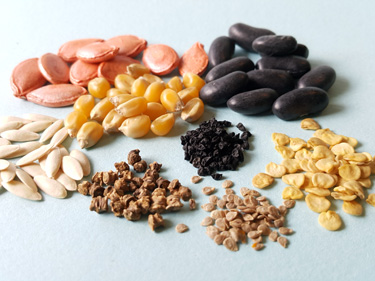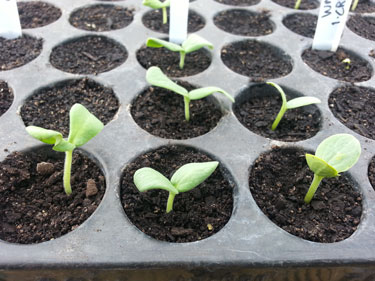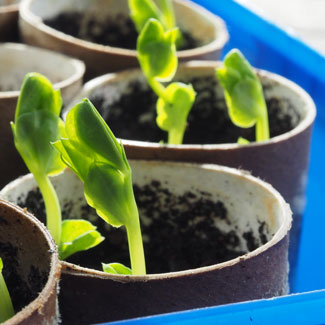20 seed sowing tips
Growing your own plants from seed is hugely satisfying and can save money too! Just follow a few simple rules for greater success.
| 1 | Get plants off to an early start by sowing seeds in containers. | |
| 2 | Always read the packet. Different seeds have different needs. Open the packet from the bottom so you don’t lose important information. | |
| 3 | Sow seeds in trays, recycled punnets or small pots. Make sure they are clean and have holes for drainage. | |
| 4 | Make your own biodegradable seedling pots from newspaper or empty toilet rolls. These can be transplanted into the garden, pot and all. Place two or three seeds in each. | |
| 5 | Use a soil-less seed raising mix to avoid soil borne pathogens. Don’t use potting mix as this contains fertiliser and lumpy bits, which are a hindrance to germination success. | |
| 6 | Use a seed raising mix that contains fungicide to protect against fatal attacks of ‘damping off’ diseases, such as Yates Black Magic Seed Raising Mix. | |
| 7 | Before sowing the seed, pre-wet the mix and leave trays to drain. | |
| 8 | After sowing keep the mix just moist (not wet). Spritz with a mist spray bottle - only when the mix is dry to touch. | |
| 9 | The planting depth relates to the size of the seed. As a general rule a covering two to four times the seeds depth is needed. Small seeds like basil or petunias can be left uncovered. Just press them into the mix with your fingers. |
|
| 10 | Label every batch of seed you sow. With time, it is easy forget what you planted where. | |
| 11 | After sowing seed, place them somewhere warm. Warmth is more important than light at this stage. Once they have germinated seedlings need plenty of light. | |
| 12 | Placing a seed tray inside a plastic bag creates conditions similar to a green house. Alternatively, cover seed trays with a sheet of glass (wipe the underside of the glass daily to remove condensation). | |
| 13 | Seedlings grown indoors need to be ‘hardened off’ before they are planted in the garden. Gradually acclimatise them by moving them outside in their containers during the day and then all night. | |
| 14 | Sow seeds every two or three weeks for a continuous harvest. As a general rule, sow your next batch once the previous batch has grown its first few leaves. | |
| 15 | Some plants don’t like being shifted and are best sown ‘direct’ to eliminate transplanting shock. Examples of seeds that are best sown in situ are coriander, peas, carrots, beetroot, parsnips and other root crops. | |
| 16 | The easiest way to thin seedlings is to simply snip the excess seedlings off at the base with scissors. The roots will die off without disturbing the remaining seedlings. | |
| 17 | An upside-down seed tray makes a useful bird barrier for direct sown seeds. | |
| 18 | Sow rows of quick maturing veges (such as lettuces and radishes) between rows of slow growing crops (like carrots and parsnips). This is a useful way to mark the rows and also makes good use of space before the larger crops fill the row. | |
| 19 | Sow extra. Not every seed will germinate. When direct sowing vegetable seeds like sweet corn, zucchini, peas and beans, sow two or three seeds at each station, removing the weakest after germination. | |
| 20 | Don’t rule out higher priced seeds. Often these are specially grown ‘F1 Hybrid’ seeds that give results that are well worth the extra dollar. |
6-Sep-2014


To make a seed pot from a toilet roll, make four evenly spaced cuts 1cm deep, then fold like a box to make the base

Seedlings growing in a cell tray

Pea seedlings growing in cardboard pots


